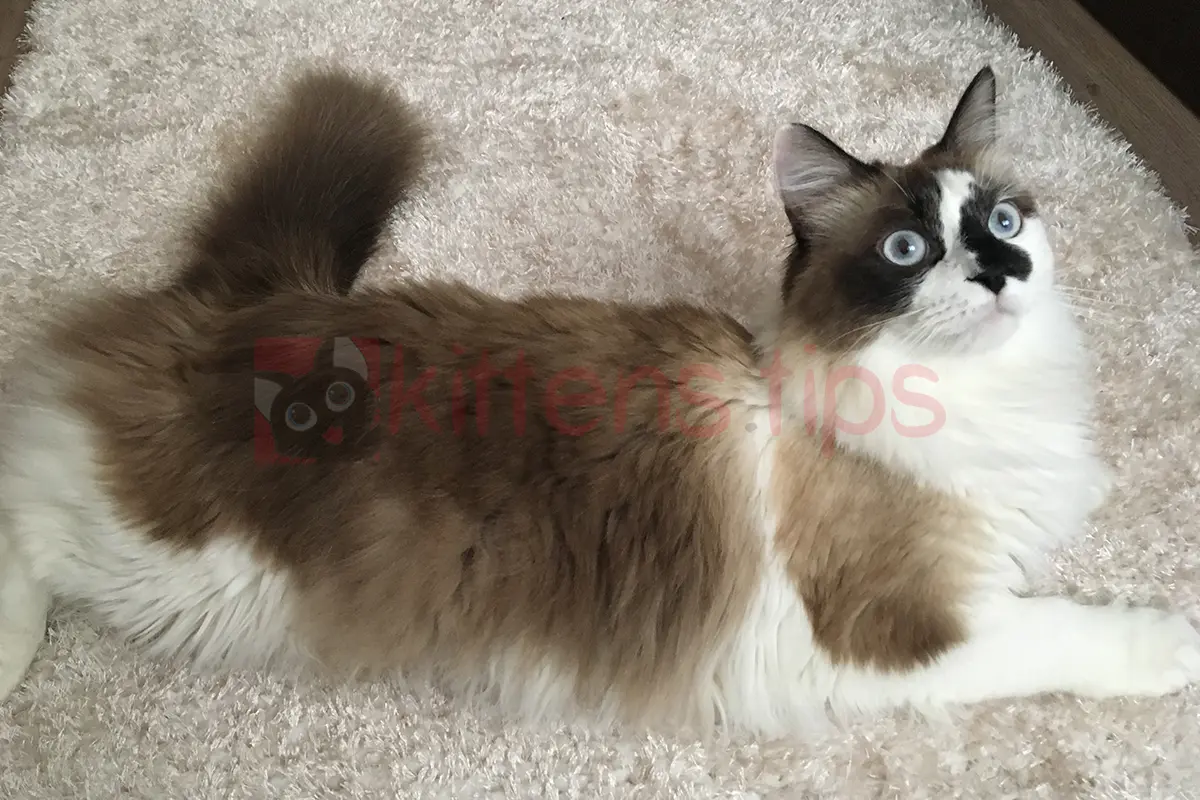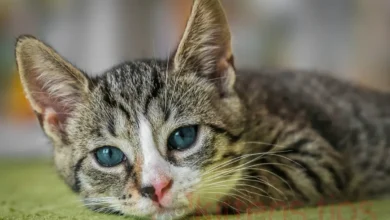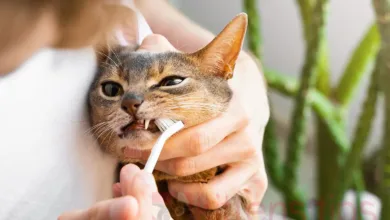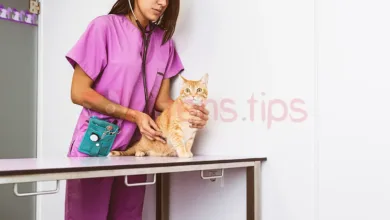
What is shedding in cats and what are the causes?
Cat Hair Everywhere: How to prevent shedding in cats.
Shedding in cats is a natural process, even though we may not be thrilled to have cat hair on our clothes, sofas, or other places in the house.
One less pleasant aspect of living with a cat is the fact that they shed. In this article, you will discover what shedding in cats is and what causes this process.
Table of Contents
What is shedding in cats and what are the causes?
Shedding is a normal physiological process in a cat’s life, during which they shed their fur twice a year. Generally, felines renew their fur to regulate their body temperature according to the changing seasons.
In addition to temperature regulation, shedding also helps the cat get rid of damaged or dead hair. Typically, shedding occurs twice a year: in the spring and autumn. However, for cats that spend a lot of time indoors, the shedding can become constant, as they are accustomed to a more consistent temperature, and their bodies lose track of the appropriate time for this process.
Experts say that a shedding cat is a healthy cat. They claim that shedding is influenced by the time a cat spends outdoors in the sunlight.
In cats exposed to strong sunlight, the shedding process starts with the arrival of spring and can last for several weeks. In the fall, the hair thickens, preparing for the colder winter temperatures, so the shedding process is shorter.
Most felines have a double layer of fur, and each layer is shed separately. This phenomenon applies to both spayed/neutered and intact cats.
Cats that spend a lot of time indoors usually shed at the beginning of summer, but this process can occur throughout the year in small amounts.
Generally, shedding can last for about a month, but the estimated time varies from breed to breed and depends on the size of the hair strand.
Therefore, it’s not advisable to seek treatments to stop your cat’s hair from falling out, even though the shedding period can be stressful for you. Cat hair will be present throughout your home, from furniture surfaces to sofas, beds, the cat’s bedding, and your clothing.
You can, however, make your life easier by following some tips on how to reduce the effects of the shedding process.
What You Can Do to Reduce Excessive Shedding in Cats (9 Tips)
1. Establish a more aggressive brushing schedule. If, for example, you used to brush your cat weekly, now put the brush to work every two days or even more often, depending on the length of the fur and the amount of hair being shed. A slicker brush is recommended, slightly dampened. If you have a long-haired purebred cat, first untangle the hair and any knots that may have formed.
2. Make brushing a pleasant and easy experience by using rewards. Brush in the direction of hair growth, gently, to detangle matted fur and groom the coat.
3. Cats groom themselves daily. Therefore, provide them with a dish of cat grass, as it helps them regurgitate ingested hair.
4. To prevent excessive shedding in cats give your cat vitamins, which not only aid in this process but can also protect your cat from colds or viruses that tend to proliferate in the spring and autumn.
5. Spoil your feline friend with good food, as they may lose weight during this period.
6. Shower her with affection and speak to her calmly and softly, as she might lose some of her playful spirit during this time and occasionally feel weaker. Therefore, she needs more love, care, attention, and affection from you.
7. Many cat owners find that a warm bath is helpful. If your cat tolerates water, you can give it a try; if not, don’t force it.
8. Trimming is an option frequently used by owners during this period, and they admit that it can be beneficial.
Related: Is it beneficial to trim a cat’s fur? Tips for cat care.
9. As a cat parent, you can use a vacuum cleaner to get rid of unwanted hair in your home. You can purchase a slicker brush for grooming, a lint roller may come in handy, a grooming glove, wet plastic gloves, or a damp sponge can easily clean unwanted hair from surfaces.
Why Excessive Shedding Occurs
The shedding process is entirely normal, but if you notice that your cat is experiencing excessive shedding, it means that she may have an underlying health issue, and a visit to the veterinarian is in order.
Excessive shedding can have various underlying causes, including stress, diet, vitamin deficiencies, allergies, dust, fleas, bacterial infections, hormonal imbalances, pregnancy, lactation, sunburn, roundworms, fungal infections, inappropriate medication, or the presence of skin lumps, cuts, eczema, and more.
In cases of excessive shedding in cats, if the veterinarian determines that there is no underlying medical problem, they may recommend a balanced diet rich in vitamins, minerals, Omega-3, and Omega-6 fatty acids. These elements can slow down the shedding process, strengthen the hair, and give it a more pleasant, robust, and healthy appearance. Veterinarians also recommend offering your cat fish or fish oil supplements every three days.
Due to their short fur, breeds like the Cornish Rex and Devon Rex may have less noticeable shedding. Cats that never shed are the hairless breeds, such as the Sphynx, but they require special care due to their frequent skin conditions.
When you chose to share your life with a cat, you also chose to embrace her fur. So, although this process might seem daunting and challenging, it’s not as unpleasant as it appears, and there are solutions to manage it.
Conclusion
In conclusion, preventing excessive shedding in cats involves maintaining a healthy lifestyle and diet for your feline friend, along with regular grooming and veterinary care. Addressing any underlying health issues is essential to keeping shedding in check. While shedding is a normal part of a cat’s life, proactive measures can help minimize its impact on your home and your cat’s well-being.


